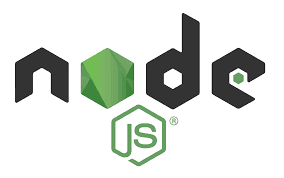Node集成到微服务体系

最近想希望通过Node将目前由Java实现的例如邮件发送,短信发送,消息通知,数据计算结构到Node中
将Node整合为服务中台,这就碰到一个问题,如何将结构的服务集成到微服务的体系中
注册中心
微服务体系中核心节点,为服务拆分提供了有效的支撑
常见的有zookeeper(CP),eureka(AP),nacos(AP/CP)
CAP原则又称CAP定理,指的是在一个分布式系统中, 一致性 (Consistency)、 可用性 (Availability)、分区容错性(Partition tolerance)。CAP 原则指的是,这三个要素最多只能同时实现两点,不可能三者兼顾
Node环境下将服务向注册中心注册还是比较简单的,引入官方依赖生成实例即可
- eureka eureka-js-client
/**
* eureka注册模块
*/
'use script'
const Eureka = require('eureka-js-client').Eureka
module.exports = new Eureka({
logger: global.LOGGER,
instance: {
app: global.APPLICATION_CONFIG.application.name, // 服务名称 app
hostName: global.APPLICATION_CONFIG.application.host, // 请求地址 localhost
instanceId: `${global.APPLICATION_CONFIG.application.host}:${global.RUNTIME.port}`, // localhost:9000
ipAddr: global.APPLICATION_CONFIG.application.host, // IP地址
statusPageUrl: `http://${global.APPLICATION_CONFIG.application.host}:${global.RUNTIME.port}/status`, // status
port: { // 端口, 必须这个格式
$: global.RUNTIME.port,
'@enabled': 'true'
},
// 向eureka注册的服务名 feign调用时使用 app
vipAddress: global.APPLICATION_CONFIG.application.name,
// 本地搭建使用MyOwn且指定class
dataCenterInfo: {
'@class': 'com.netflix.appinfo.InstanceInfo$DefaultDataCenterInfo', // 缺少会导致404错误
name: 'MyOwn' // 'Netflix' | 'Amazon' | 'MyOwn'
}
},
eureka: {
// 如果开启了auth 需要加入用户名和密码
host: global.APPLICATION_CONFIG.eureka.host, // eureka地址,多个使用逗号分隔
port: global.APPLICATION_CONFIG.eureka.port, // 端口号
servicePath: global.APPLICATION_CONFIG.eureka.servicePath // 如果eureka没有更改过则是默认的 /eureka/apps
}
})
复制代码
- nacos nacos-sdk-nodejs
/**
* nacos 注册服务
* 向nacos注册,订阅配置推送
* 通过events模块通知配置更新
*/
'use script'
const { NacosNamingClient, NacosConfigClient } = require('nacos')
const yaml = require('yamljs')
const logger = global.LOGGER
// 新建客户端
const client = new NacosNamingClient({
logger,
serverList: global.APPLICATION_CONFIG.nacos['service-list'],
namespace: global.APPLICATION_CONFIG.nacos.namespace
})
client.ready()
// 向nocos实例注册
client.registerInstance(global.APPLICATION_CONFIG.application.name, {
ip: global.APPLICATION_CONFIG.application.host,
port: global.RUNTIME.port
}, global.APPLICATION_CONFIG.nacos.namespace)
// 新建配置实例,接收推送
const config = new NacosConfigClient({
serverAddr: global.APPLICATION_CONFIG.nacos['service-list'],
namespace: global.APPLICATION_CONFIG.nacos.namespace
})
config.subscribe({
dataId: 'application-mercury-dev.yml',
group: global.APPLICATION_CONFIG.nacos.namespace
}, content => {
global.LOGGER.info('<= Publish Config Received')
const remoteConfig = yaml.parse(content)
global.LOGGER.info(`=>${JSON.stringify(remoteConfig)}`)
// 覆盖当前配置
Object.assign(global.APPLICATION_CONFIG, remoteConfig)
// 推送
global.EVENT_BUS.emit('resource-update')
})
exports.client = client
exports.config = config
复制代码
消息队列
消息队列当然也要整合,http调用肯定不能满足高并发,高负载的场景。MQ可以有效的提供缓冲与解构,贴一下RabbitMQ的实现
需要注意的事,接收到消息不一定只有单个内部模块使用,所以也需要考虑内部的订阅发布
/**
* rabbit-mq 客户端封装
*/
'use script'
const amqp = require('amqplib')
module.exports = class RabbitMQ {
/**
* 构造器, 开启rabbit-mq的连接
* @param host
* @param port
* @param user
* @param pass
*/
constructor (host = 'localhost', port = 5672, user = '***', pass = '***') {
const self = this
self.hosts = host
self.consumer = []
amqp.connect({
hostname: host,
port: port,
username: user,
password: pass
}).then(conn => {
global.LOGGER.info('<= RabbitMQ Connected')
self.connect = conn
self.connect.createChannel().then(channel => {
global.LOGGER.info('<= Chanel Created')
self.channel = channel
self._consume()
})
}).catch(e => {
global.LOGGER.error(`<= RabbitMQ Connect Error ${e}`)
})
self.subscriber = {}
}
/**
* 添加消息队列监听
* @private
*/
_consume () {
const distribute = (message) => {
// 防止重复消费, 程序的错误将记录日志
try {
const content = message.content.toString()
global.LOGGER.info(`<= Recive Queue [${message.fields.routingKey}] Message ${content}`)
this.subscriber[message.fields.routingKey].forEach(callback => {
callback(JSON.parse(content))
})
} catch (e) {
global.LOGGER.error(e)
} finally {
// 接受消息并且确认
this.channel.ack(message)
}
}
this.consumer.forEach(consumer => {
if (!this.subscriber[consumer.topic]) {
this.channel.consume(consumer.topic, distribute)
this.subscriber[consumer.topic] = []
}
this.subscriber[consumer.topic].push(consumer.callback)
})
}
/**
* 消费
* @param topic
* @param callback
*/
subscribe (topic, callback) {
this.consumer.push({ topic: topic, callback: callback })
}
/**
* 推送
* @param topic
* @param message
*/
publish (topic, message) {
const stringMessage = JSON.stringify(message)
this.channel.sendToQueue(topic, Buffer.from(stringMessage))
global.LOGGER.info(`=> Publish Message ${stringMessage} `)
}
/**
* 获取通信管道
* @returns {any}
*/
connection () {
return this.channel
}
}
复制代码
提供SDK
如果希望能够让其他服务或者系统 快乐
的调用,还是需要提供SDK的,提供SDK的好处有
-
开箱即用,各种场景已经考虑到,并且依赖也已经整合
-
完善的测试,为上面的有点提供支持
-
entity
public class Mail {
/** 发件人 */
private String from;
/** 收件人 */
private String to;
/** 抄送 */
private String cc;
/** 秘抄 */
private String bcc;
/** 主题 */
private String subject;
/** 正文 */
private String text;
/** HTML正文 */
private String html;
public Mail() {
}
public Mail(String from, String to) {
this.from = from;
this.to = to;
}
public Mail(String from, String to, String subject) {
this.from = from;
this.to = to;
this.subject = subject;
}
public Mail(String from, String to, String cc, String subject, String text) {
this.from = from;
this.to = to;
this.cc = cc;
this.subject = subject;
this.text = text;
}
...
}
复制代码
- service
@FeignClient(name = "thunder-mercury")
public interface MercuryService extends IService {
/**
* 发送邮件
*
* @param mail 邮件实体
* @return {@link BaseResponse}
*/
@PostMapping(value = "/v1/mail/")
BaseResponse<String> send(@RequestBody Mail mail);
...
}
复制代码

正文到此结束
- 本文标签: update Connection js message rabbitmq CTO 并发 list node src map MQ Netflix 实例 java Amazon https ACE 代码 高并发 微服务 value remote lib zookeeper IO Feign parse consumer struct Word 数据 分布式 注册中心 key 端口 dist cat Service 一致性 HTML final ip http UI id amqp 消息队列 测试 client queue 分布式系统 App Eureka mail entity 配置 希望 bus json
- 版权声明: 本文为互联网转载文章,出处已在文章中说明(部分除外)。如果侵权,请联系本站长删除,谢谢。
- 本文海报: 生成海报一 生成海报二
热门推荐
相关文章
Loading...











![[HBLOG]公众号](https://www.liuhaihua.cn/img/qrcode_gzh.jpg)

